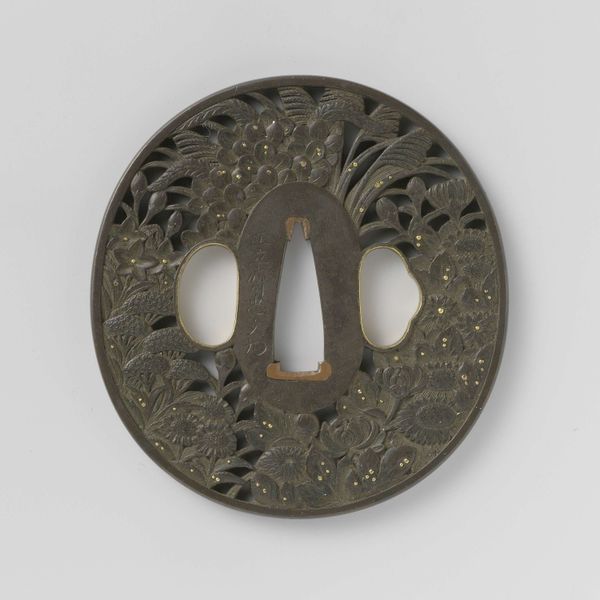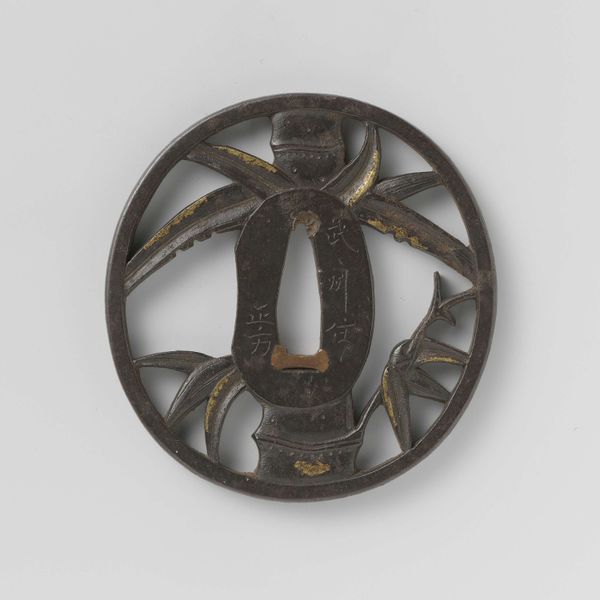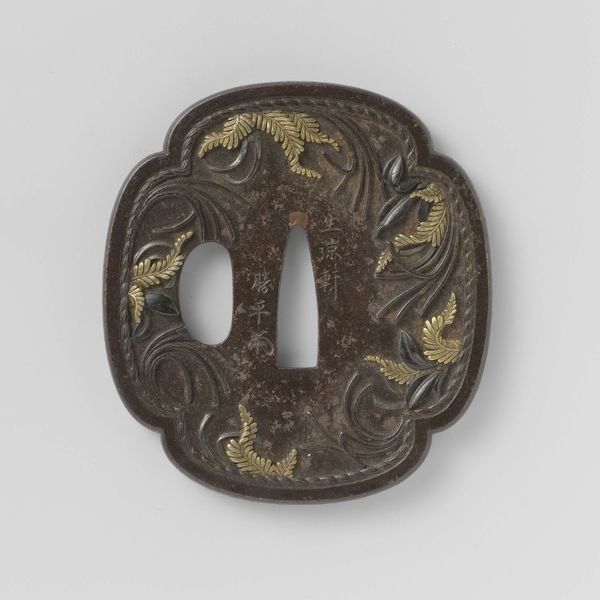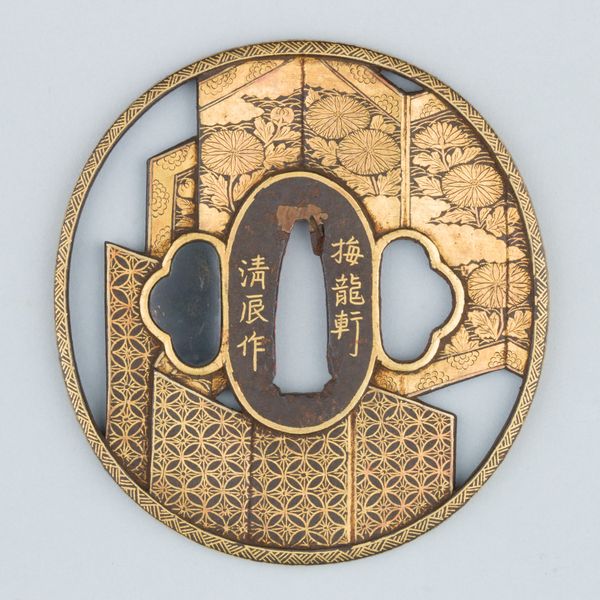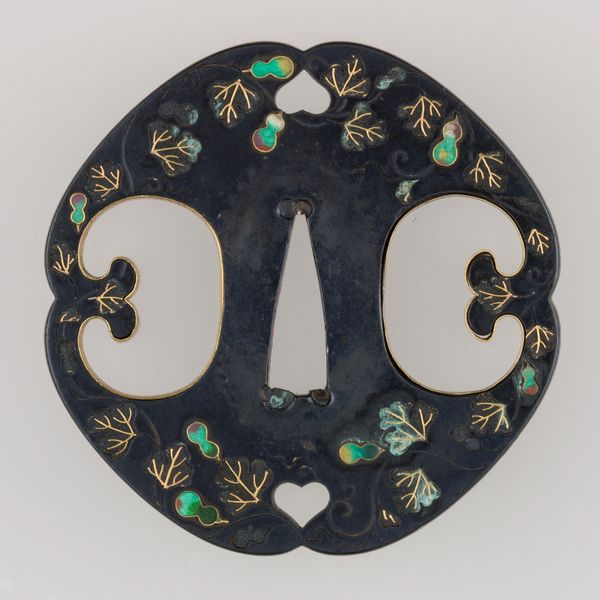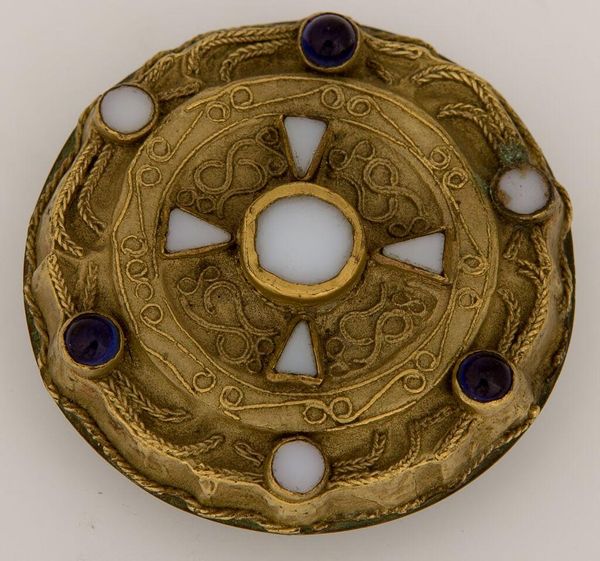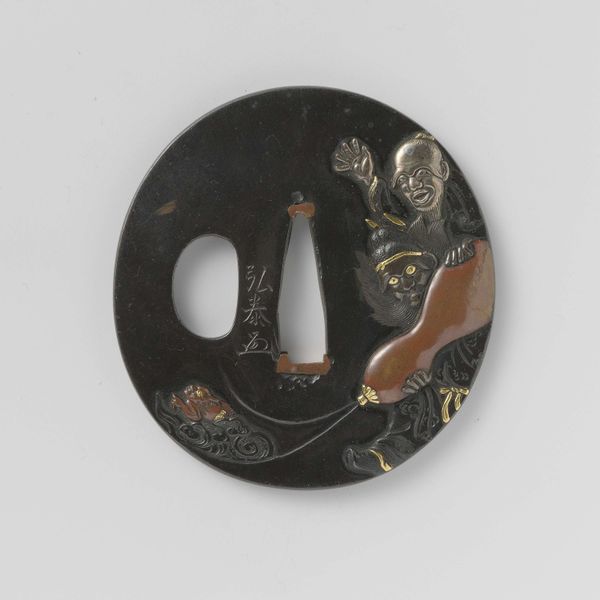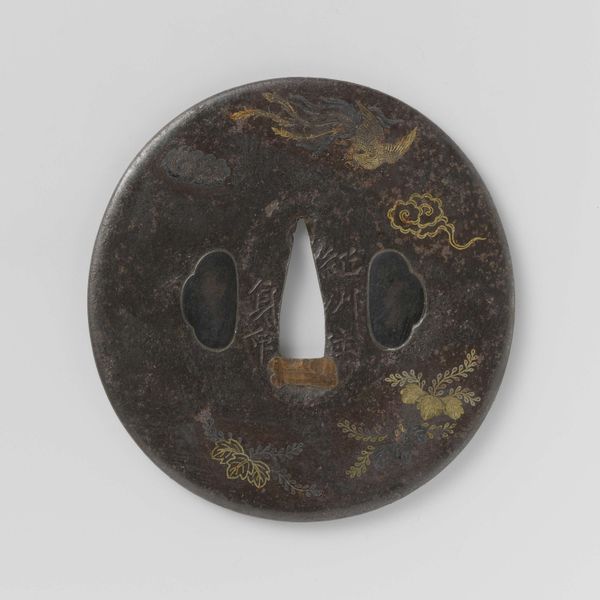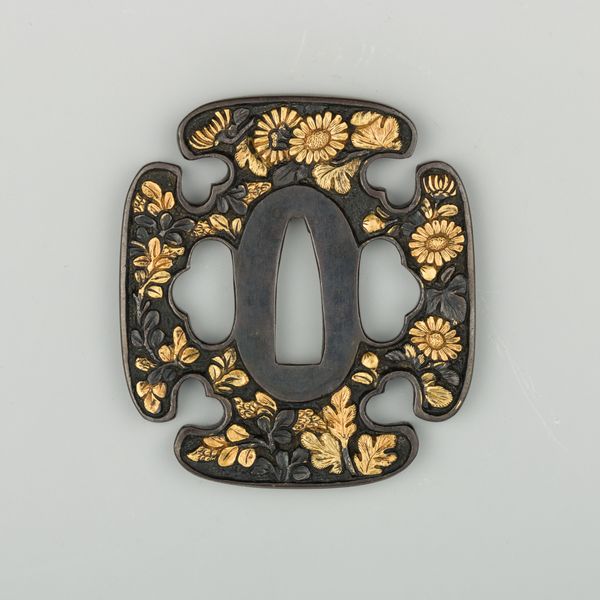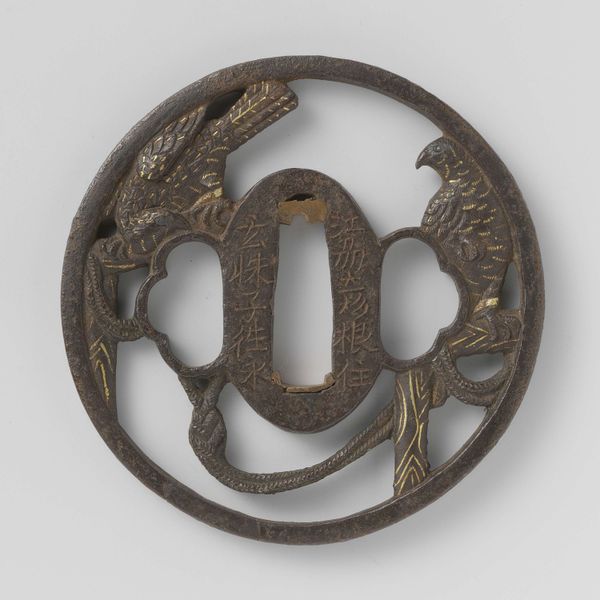
Sword guard (<i>Tsuba</i>) Depicting Crests and Arabesques (家紋散唐草文鐔) 1575 - 1615
0:00
0:00
carving, metal, bronze, engraving
#
carving
#
metal
#
pattern
#
asian-art
#
flower
#
bronze
#
geometric
#
armor
#
decorative-art
#
layered pattern
#
engraving
#
sword
Dimensions: Diam. 3 1/4 in. (8.3 cm); thickness 1/8 in. (0.3 cm); Wt. 4 oz. (10.2 g)
Copyright: Public Domain
This sword guard, or tsuba, was created by Koike Izumi no Kami Naomasa, who lived between 1575 and 1615. The tsuba would have been a functional and symbolic part of a sword, reflecting the samurai's status and identity. During this period in Japan, sword fittings moved beyond simple ornamentation and became miniature art forms. Naomasa's work stands out through its intricate designs which blend crests and arabesque patterns. These motifs reflect the samurai class's complex social structure and the aesthetic preferences of the time. What’s fascinating here is how the crests, or kamon, were used to signify family lineage and status. These were not just decorative, but integral to a samurai's identity, much like a signature. Can you imagine carrying your family's history and your own identity, quite literally, on your sword? The arabesque patterns further hint at the blending of indigenous and foreign influences, underscoring a period of cultural exchange and transformation. The tsuba embodies the samurai’s code of honor, and the elegance and craftsmanship, serve as a reminder of the deep personal and societal values attached to these objects.
Comments
No comments
Be the first to comment and join the conversation on the ultimate creative platform.

